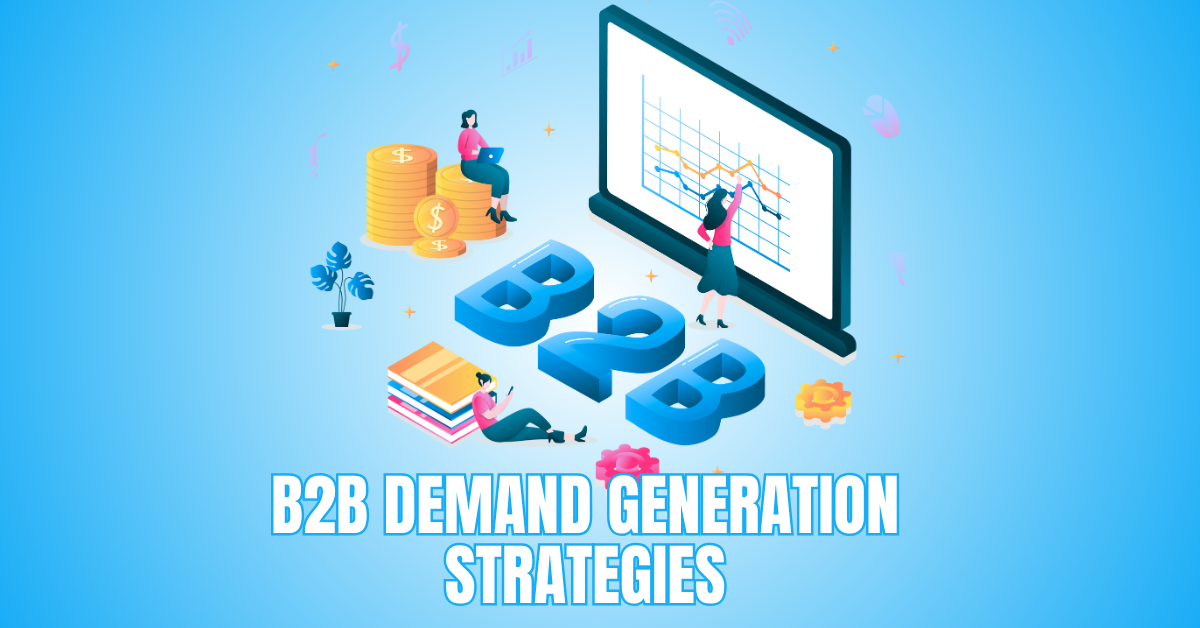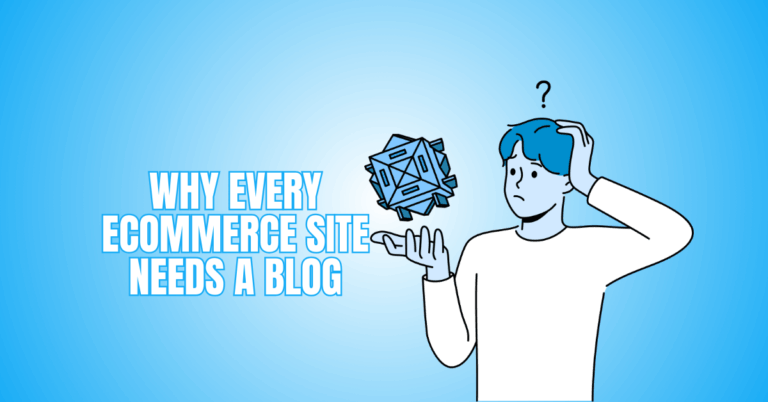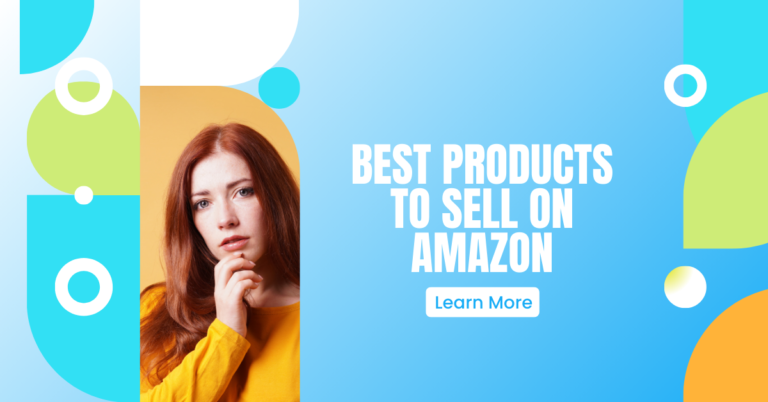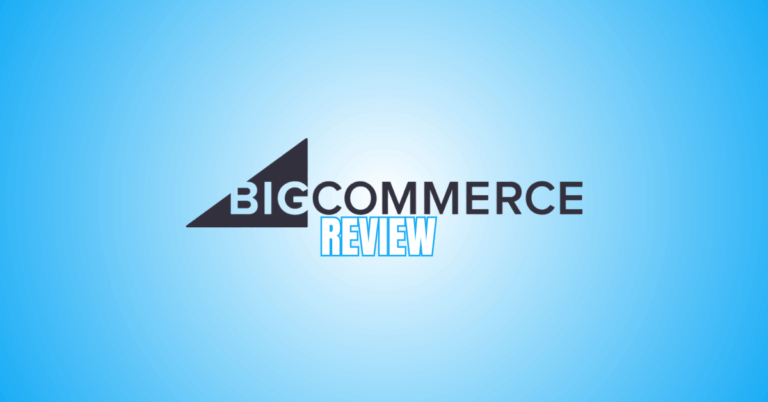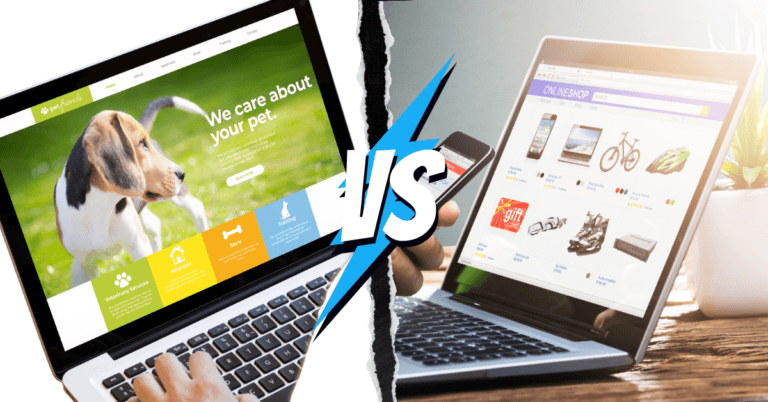Powerful B2B Demand Generation Strategies
B2B demand generation strategies are focused marketing efforts designed to create awareness, spark interest, and attract high-quality leads.
These strategies target key decision-makers through valuable content, personalized outreach, and data-driven campaigns that build meaningful engagement.
Companies can improve relationships, reduce the sales cycle, and boost conversion rates by coordinating their marketing and sales teams.
With a consistent approach, B2B demand generation fuels predictable growth and helps organizations scale their success in competitive markets.
Powerful B2B Demand Generation Strategies For Quality Leads
The following 15 are effective B2B demand generation strategies designed to attract high-quality leads, enhance engagement, and drive measurable business growth through strategic marketing execution:
1. Content Marketing
The most crucial tactic is content marketing. It concentrates on creating and sharing valuable, pertinent, and consistent information in order to draw in and hold on to a target audience.
In the B2B space, this includes blog posts, white papers, case studies, and eBooks that address specific industry pain points and business challenges.
Furthermore, high-quality content strengthens SEO, increases organic website traffic, and builds brand authority. When shared across multiple channels—like email, social media, and webinars—it helps nurture prospects.
This offers information at every point in the buyer's journey. Ultimately, effective content marketing converts engaged audiences into qualified leads and long-term customers.
Key Points
- Focuses on delivering valuable, relevant, and consistent content
- Includes blogs, white papers, case studies, and ebooks
- Improves SEO and drives organic traffic
- Shared via email, social, and webinars to nurture leads
- Builds brand authority and converts engaged audiences
2. Webinars And Virtual Events
Webinars and virtual events are very successful B2B demand development techniques. They offer real-time engagement and demonstrate industry expertise.
While these events may include product demos, expert panels, or trend discussions, they also help educate and build trust with prospects.
For example, a cybersecurity firm might host a webinar on threat prevention tools. Since attendees register in advance, you capture qualified leads. Despite the event's conclusion, participation is maintained through live polling and Q&A.
Because follow-up emails and personalized content reinforce key takeaways, prospects remain engaged. As a result, they have a higher chance of continuing on the buyer's path to conversion.
Key Points
- Provides real-time engagement and expertise sharing
- Covers demos, expert panels, and industry trends
- Captures leads through registration and participation
- Maintains engagement with Q&A, polls, and follow-ups
- Builds trust and drives progression in the buyer journey
3. Email Nurture Campaigns
Through the development of trust and sustained engagement, email nurture programs are essential for assisting prospective customers in moving through the sales funnel.
A key to success is segmentation—dividing email lists based on behaviour, industry, or role. For example, decision-makers receive product guides, while IT professionals get technical documents tailored to their needs.
Even if leads aren’t ready to buy yet, consistently sharing valuable content like case studies, insights, and helpful solutions keeps your brand top of mind.
Automation sends timely, personalized messages that address pain points, speeding up conversions. Overall, well-crafted email nurture campaigns build trust and drive higher conversion rates effectively.
Key Points
- Segments audiences by behaviour, role, or industry
- Shares tailored content like guides and insights
- Uses automation for timely communication
- Builds trust over time and keeps your brand top-of-mind
- Drives consistent engagement and higher conversions
4. LinkedIn Advertising
LinkedIn advertising enables highly targeted outreach since you can filter audiences by job title, industry, company size, location, and more.
Although other social platforms offer broad reach, LinkedIn provides a professional context, making lead quality higher and more relevant.
While using sponsored content, InMail, or text ads, you can directly promote solutions to key decision-makers. Because these ads highlight your expertise, share valuable resources, or invite users to events like webinars, they foster meaningful engagement.
Even if prospects aren’t ready to convert immediately, consistent brand visibility and tailored messaging help keep them engaged. This increases the likelihood they’ll respond when a purchasing decision arises.
Key Points
- Enables precision targeting by job title, company size, and industry
- Uses sponsored content, InMail, and text ads
- Promotes content, events, and value-driven messaging
- Engages professional audiences with relevant offers
- Enhances lead quality and brand visibility
5. Search Engine Optimization (SEO)
SEO is the process of making your website and content more search engine-friendly, which significantly boosts the visibility of relevant keywords.
While a strong SEO strategy targets the terms your prospects actively search for, it drives organic traffic to your site.
Optimized content improves your chances of appearing well in search results and drawing in quality visitors, even when competition can be fierce.
Since SEO works best when combined with content marketing, it ensures your valuable resources are easily discoverable.
Since SEO generates a steady flow of inbound leads, it remains a key tactic for increasing and building interest in your products and establishing brand familiarity or services.
Key Points
- Optimizes website and content for search rankings
- Target keywords your audience is actively searching for
- Pair with content marketing for maximum impact
- Increases qualified organic traffic over time
- Builds long-term inbound lead generation
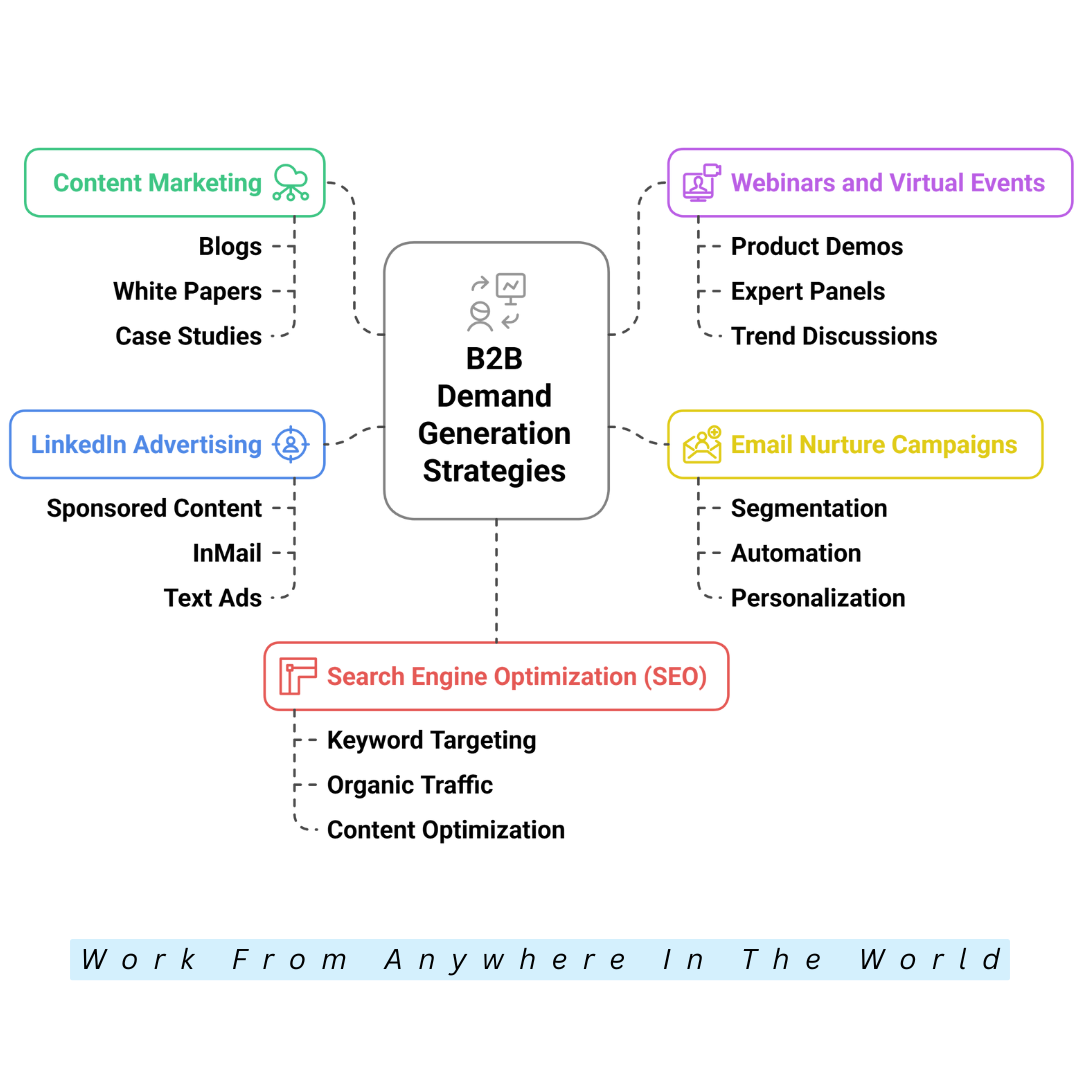
6. Account-Based Marketing (ABM)
Account-Based Marketing (ABM) is a powerful B2B demand generation strategy that targets high-value accounts with personalized campaigns to maximize impact and results.
It aligns sales and marketing teams to deliver tailored messages that address each account’s unique needs. By focusing resources on a smaller, strategic group of prospects, ABM prioritizes quality over quantity.
This approach boosts engagement by directly addressing each company’s specific challenges. As a result, ABM accelerates sales cycles and increases conversion rates, especially in complex B2B markets with multiple decision-makers.
In summary, ABM provides highly targeted and efficient demand generation that drives stronger, more sustainable business growth.
Key Points
- Targets high-value accounts with personalized strategies
- Aligns sales and marketing for coordinated outreach
- Focuses on quality engagement over volume
- Addresses account-specific pain points and challenges
- Increases deal size, sales velocity, and ROI
7. Paid Search Advertising
Paid search advertising helps your business appear in front of people who are actively searching for the products or services you offer. It targets specific keywords through platforms like Google Ads and Bing Ads.
While bidding on these keywords captures high-intent traffic, well-crafted ads with strong calls to action encourage clicks and conversions.
For example, a software company might bid on “best project management tool” to reach interested buyers actively researching solutions online.
Since paid advertising campaigns provide real-time performance data, they can be quickly optimized to improve cost-effectiveness. This makes them a highly flexible and powerful demand generation tactic to maximize return on ad spend.
Key Points
- Appears to users actively searching for your solutions
- Bids on relevant high-intent keywords
- Features strong calls-to-action in ad copy
- Provides real-time data for fast optimization
- Delivers flexible, cost-effective results
Wealthy Affiliate – Mini Review (2025)
If you’ve ever thought about turning your blog, passion, or niche into an online business,
Wealthy Affiliate (WA) is one of the most beginner-friendly platforms I’ve used.
It combines step-by-step training, website hosting, SEO research tools,
and an active community all in one place.
What I like most: you can start free (no credit card needed),
explore lessons, test the tools, and connect with other entrepreneurs
before upgrading. WA isn’t a “get rich quick” scheme — it’s a platform where success comes
from consistent effort and applying what you learn.
8. Lead Magnets And Gated Content
Lead magnets and gated content are powerful tools because they offer valuable resources like templates, guides, or industry reports. In exchange, they collect contact information from potential customers.
Although prospects may hesitate to share details, gated content attracts those genuinely interested in specific solutions relevant to their challenges.
Since this approach helps segment leads based on their needs and behaviours, it enables more personalized nurturing and communication.
While it builds your email list, it also qualifies leads by demonstrating their interest early on. Consequently, you can deliver targeted follow-ups and customized marketing efforts that increase engagement and improve conversion rates.
Key Points
- Offers resources like guides, templates, and reports
- Collects contact info in exchange for access
- Attracts motivated, high-intent prospects
- Enables segmentation based on behaviour
- Builds a qualified email list for nurturing
9. Social Proof And Case Studies
In order to demonstrate the legitimacy and reliability of your offering, social proof and case studies are essential resources.
Whether through testimonials, third-party reviews, or client success stories, showcasing real-world outcomes effectively reduces buyer skepticism.
Here, case studies are especially impactful, as they tell relatable stories that highlight how your product or service solved specific business problems.
For example, a logistics firm might feature a case study showing how it reduced delivery times by 30% for a major retail client.
When strategically shared across email, websites, and social media channels, these valuable assets influence buying decisions. They also accelerate the prospect’s journey toward conversion.
Key Points
- Uses testimonials, reviews, and success stories
- Reduces skepticism and increases credibility
- Highlights real business outcomes and ROI
- Shared across marketing channels for maximum reach
- Accelerates decision-making through relatable examples
10. Interactive Content
Interactive content—such as quizzes, assessments, and calculators—engages prospects by providing personalized insights and solutions.
This content increases the time visitors spend on your site, encouraging deeper, meaningful interactions. It collects valuable data about visitor interests, behaviours, and specific business needs.
You can use this data to provide recommendations that are more relevant, trustworthy, and valuable. Offering dynamic and unique experiences helps your brand stand out in a crowded digital market.
Additionally, interactive content helps qualify leads by filtering prospects based on their inputs, making follow-up campaigns more precise and effective.
In conclusion, interactive content improves user experience and marketing efficiency, driving stronger connections and generating higher-quality leads.
Key Points
- Engages users with quizzes, calculators, and assessments
- Increases time on site and improves UX
- Gathers user data to personalize experiences
- Helps qualify leads through inputs and results
- Makes your brand memorable and useful
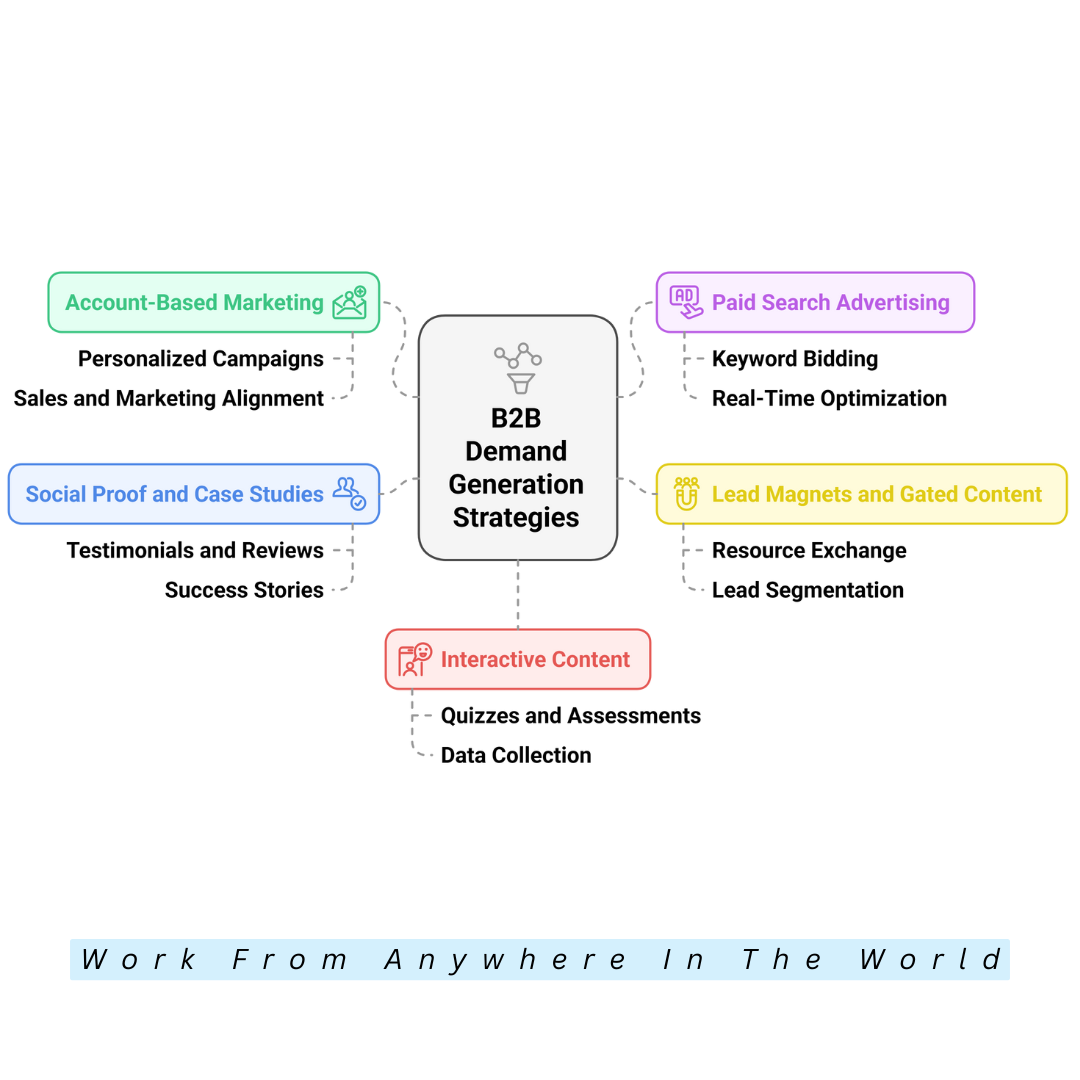
11. Referral Programs
Referral programs encourage existing customers or partners to recommend your product or service to others. You can promote advocates to actively and regularly share their great experiences by providing incentives such as discounts, prizes, or special access.
Moreover, referrals often generate warm, high-quality leads because they come with built-in trust. For example, a SaaS company might offer a free month of service to users who refer a colleague.
Furthermore, referral leads tend to convert faster and require less nurturing. Hence, a well-structured referral program can significantly boost your lead generation efforts while keeping acquisition costs relatively low. It also improves overall customer loyalty.
Key Points
- Encourages satisfied users to refer others
- Offers rewards or incentives for successful referrals
- Generates warm leads with built-in trust
- Reduces acquisition costs and increases loyalty
- Converts faster and scales through happy customers
12. Video Marketing
Video marketing, which employs brief, interesting movies to explain complex products or services clearly, is one of the best B2B demand-generating techniques.
Businesses often share customer success stories, product demos, or expert insights. Videos rapidly capture viewers' attention and are simple to post on several platforms.
Including them in emails, social media postings, or landing pages increases interaction. They also help build trust and visually show value.
Therefore, well-made videos make it easier for prospects to understand the benefits and take action. As a result, they drive higher conversion rates and support faster decisions in the B2B sales process.
Key Points
- Simplifies complex ideas through engaging videos
- Features demos, customer stories, and expert tips
- Works well across email, social media, and websites
- Builds trust visually and emotionally
- Boosts engagement and speeds up buying decisions
13. Retargeting Campaigns
Retargeting campaigns focus on showing ads to visitors who have previously engaged with your website or content but didn’t convert.
This approach keeps your brand top of mind, encouraging prospects to return quickly. Ads are personalized based on users’ past behaviour and interests, boosting relevance and engagement.
Because the messaging is targeted, retargeting significantly increases conversion rates. It is also more cost-efficient, often delivering a better return on investment than cold outreach or broad targeting.
Retargeting ads can appear across multiple channels like social media, display networks, and search engines simultaneously. Overall, retargeting maximizes the value of existing traffic and greatly improves campaign effectiveness and profitability.
Key Points
- Re-engages users who didn’t convert initially
- Delivers personalized ads based on past behaviour. Appears across social, display, and search networks
- Keeps your brand top-of-mind
- Converts warm leads cost-effectively
14. Influencer And Partner Collaborations
One effective strategy to increase B2B demand generation is to work with strategic partners and industry influencers. Audiences of influencers are devoted, involved, and trust their judgment.
When they promote your solutions, it builds credibility and drives awareness. Access to new markets and pooled resources is made possible by partnering with companies that complement one another.
These collaborations can include co-hosted webinars, guest blogs, joint campaigns, or shared referrals. Reaching a larger audience and producing excellent leads are made easier when you align with reputable voices and businesses.
Additionally, it enhances the reputation of your brand and aids in the development of enduring business partnerships that eventually benefit both sides.
Key Points
- Leverages industry influencers with trusted audiences
- Partners with aligned brands for co-marketing opportunities
- Includes webinars, content swaps, and shared campaigns
- Expands reach and builds credibility quickly
- Generates qualified leads through trusted sources
15. Customer Success Stories And Reviews
Customer success stories and reviews are essential tools for B2B demand generation. Here, they provide real-world proof of how your product or service solves problems and delivers value.
Sharing detailed case studies highlights specific challenges, solutions, and measurable results, helping prospects relate to your offerings. Moreover, positive reviews build trust and credibility, influencing buying decisions significantly.
Share these client success stories on your website, social media accounts, and promotional materials. Authentic recommendations help build trust and reduce any doubts customers may have.
By leveraging customer experiences, you create powerful social proof that attracts and converts more high-quality leads, ultimately driving business growth.
Key Points
- Showcases how your solution solves real problems
- Builds trust with authentic testimonials
- Offers measurable results to support claims
- Encourages buyers through relatable experiences
- Strengthens your reputation and drives conversions
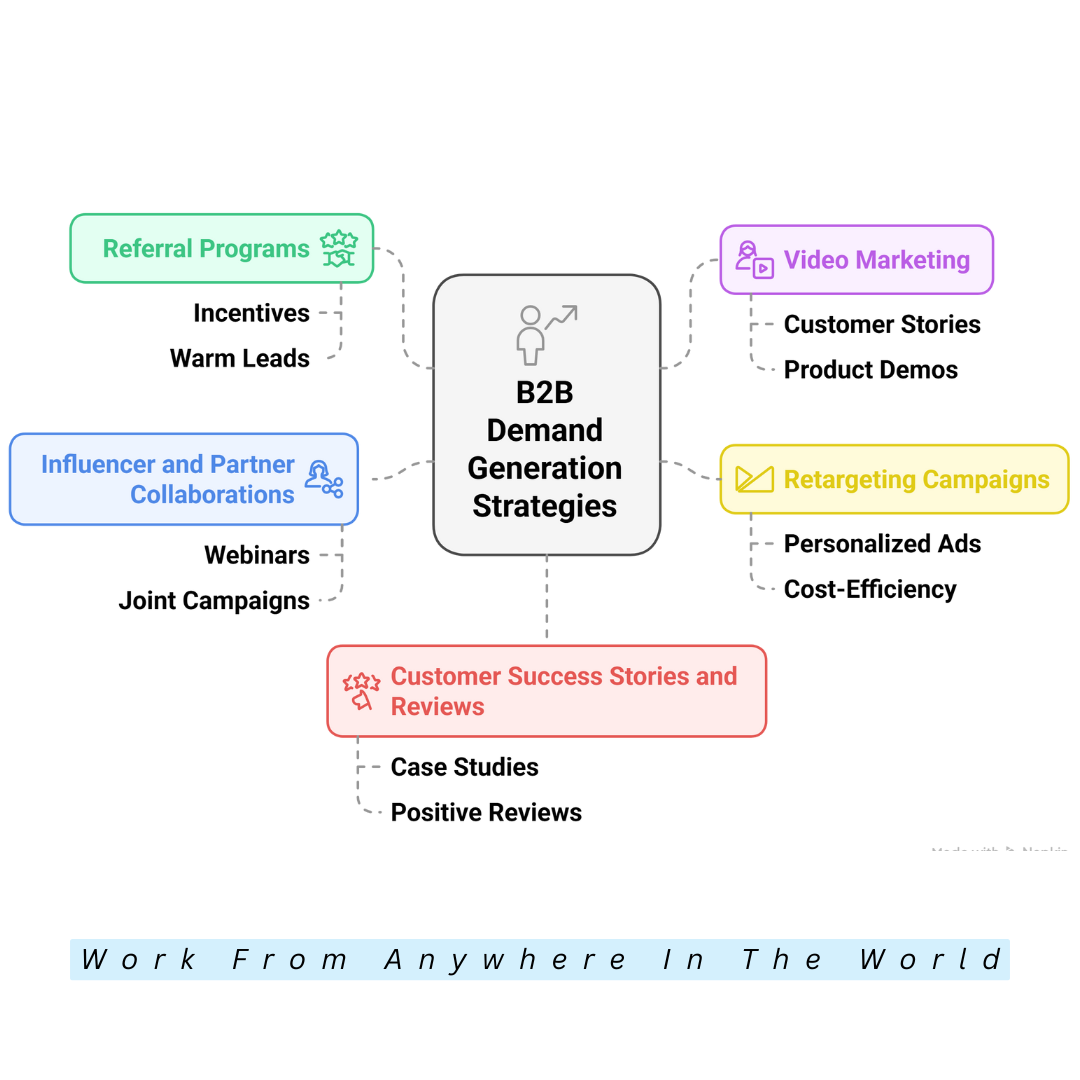
FAQs
1. What Is Demand Generation In Marketing?
In marketing, demand creation refers to creating awareness and interest in a product or service in order to attract customers. It aims to attract, engage, and nurture potential customers throughout their buying journey effectively.
2. What Does B2B Lead Generation Entail?
The process of finding and luring new business clients, fostering their interest, and turning them into qualified leads in order to increase sales and expand commercial partnerships is known as business-to-business (B2B) lead generation.
3. How To Get B2B Leads?
To get B2B leads, use targeted content marketing, LinkedIn outreach, email campaigns, webinars, SEO, and referrals. Prioritize one-on-one interactions to guide potential customers through each sales stage thoughtfully.
4. What Is A B2B Business Model?
A B2B business model involves companies selling products or services directly to other businesses, focusing on long-term relationships, larger transactions, and tailored solutions to meet organizational needs efficiently.
5. What Is B2B Demand Generation?
B2B demand generation refers to marketing strategies and tactics that create awareness and interest in a company’s products or services among other businesses. It focuses on nurturing potential buyers throughout the sales funnel.
6. How Is Demand Generation Different From Lead Generation?
Demand generation builds awareness and interest broadly, while lead generation is focused on capturing specific contact information from interested prospects. Demand gen feeds lead gen.
7. How Long Does It Take To See Results From Demand Generation?
It depends on the strategy. Organic tactics like SEO may take months, while paid ads or email campaigns can show faster results. Consistency is key.
Conclusion
These 15 effective B2B demand creation techniques provide a thorough method for drawing in and interacting with excellent leads. They help convert prospects effectively and drive growth.
By combining targeted content, personalized campaigns, and trusted social proof, businesses nurture prospects effectively. This approach supports engagement throughout the buyer’s journey.
As a result, using these strategies regularly increases brand authority and produces quantifiable growth. It fosters long-term customer relationships, ensuring sustained success in competitive B2B markets worldwide.
I trust you enjoyed this article on the Powerful B2B Demand Generation Strategies. Please stay tuned for more insightful blogs on affiliate marketing, online business, and working from anywhere in the world.
Take care!
— JeannetteZ
💬 Your Opinion Is Important To Me
Do you have thoughts, ideas, or questions? I’d love to hear from you. Please leave your comments below or email me directly at Jeannette@WorkFromAnywhereInTheWorld.com.
📚 More Work From Anywhere Reads
🚀 Ready to Build a Business You Can Run from Home
or from Anywhere in the World?
Imagine creating income on your terms — from home, a cozy café, or wherever life takes you.
With the right tools, training, and community support, it’s entirely possible.
Start your own online business for free — no credit card needed.
Disclosure
This post may contain affiliate links. As an Amazon Associate and participant in other affiliate programs, I earn from qualifying purchases at no extra cost to you. Please read my full affiliate disclosure.

